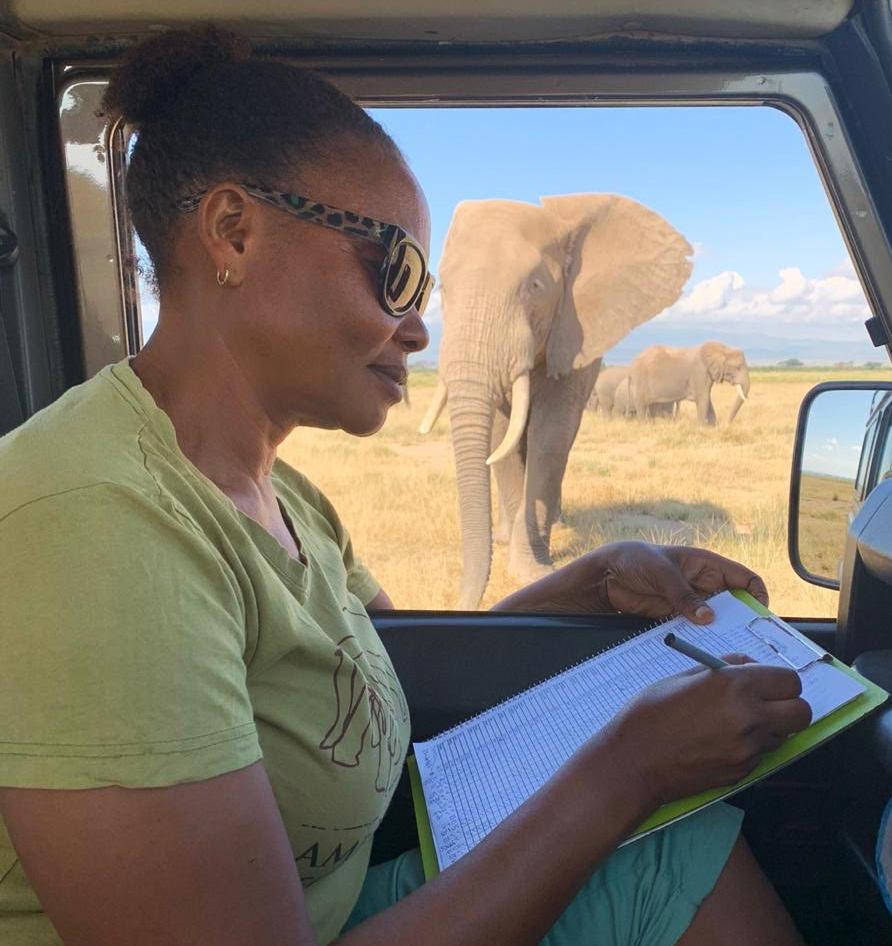
Emmet came for a visit with Katito
She's doing everything she can to keep him safe. You can help her and Emmet.
|
|
Welcoming a New ATE Baby
|
We're having a human baby boom as well as an elephant one. Vicki Fishlock, our Resident Scientist, gave birth to a baby boy, Alexander, on March 18. He and his mother were pictured in our last newsletter. Sylvi Nyambura, our Office Administrator, gave birth to a gorgeous baby girl on April 26, a sister for Sadie. Welcome Nelianne!
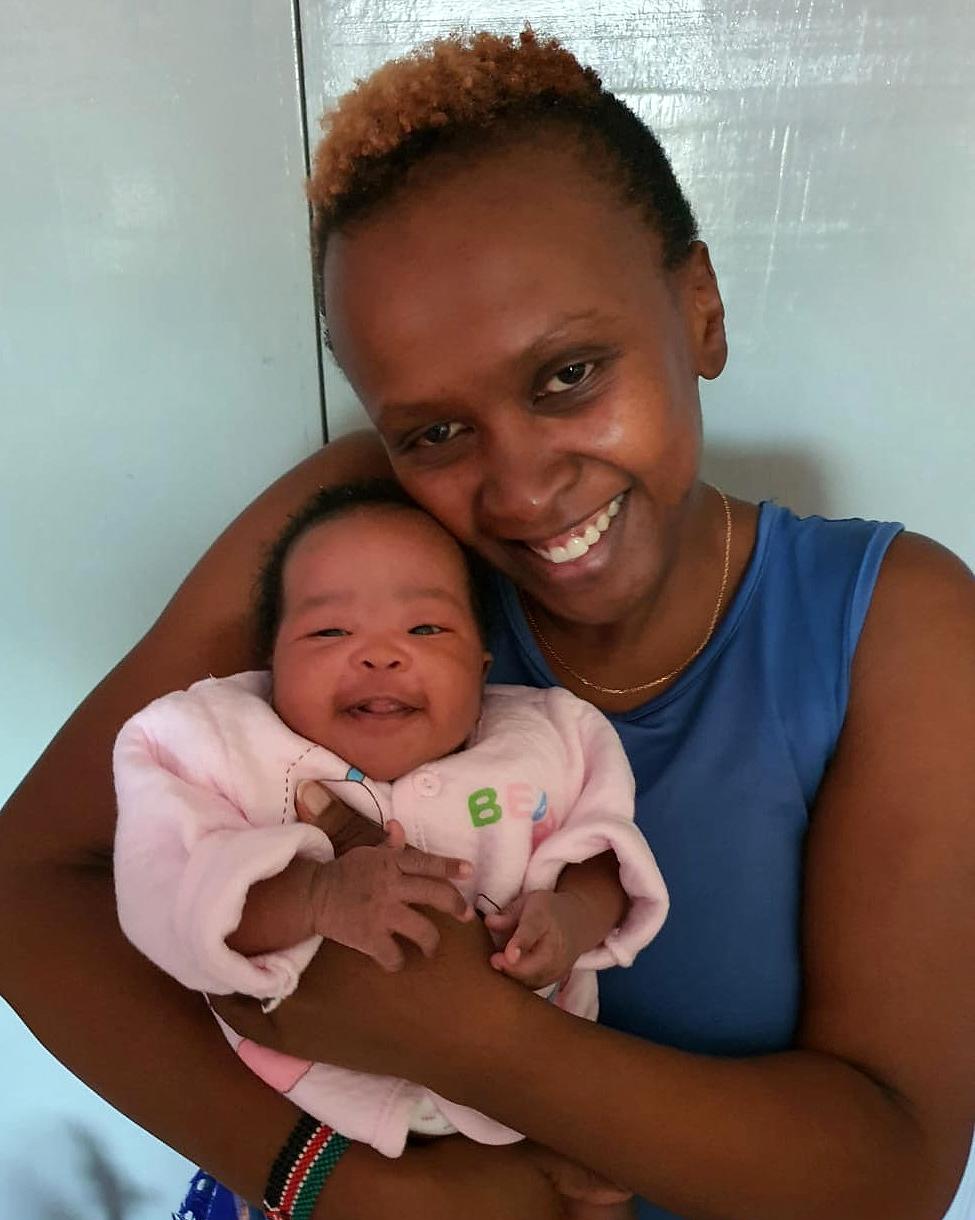
|
Amboseli's Economic Benefits Report
|
Placing an economic value on natural resources is something conservationists are increasingly asked to do. Amboseli is one of Kenya's most popular National Parks, so understanding the economic contribution the wildlife and cultural aspects bring to the local economy is fundamental to the future of conservation amidst development plans for the ecosystem.
In late 2018, we at ATE initiated a survey to quantify the economic benefits of the presence of wildlife in the Amboseli ecosystem. Partnering with the Amboseli Ecosystem Trust (AET), we provided logistical and other support while the Big Life Foundation helped fund the report. AET was initially established to oversee the implementation of the Amboseli Ecosystem Management Plan, which is renewed every ten years. AET has grown far beyond this role, and now acts as the principal bridge between conservation organizations, local government and the Maasai community on issues regarding land use and development.
This survey was an ambitious undertaking, since Amboseli's wildlife has catalyzed many different sectors. NGOs, hotels, camps, and research organizations were all approached to share their financial data for 2017-2018. In order to make sure everyone was comfortable sharing sensitive data, we hired an external consultant to conduct the analysis. Although we didn't manage to get full coverage, most organizations responded positively, giving us good coverage of most of the ecosystem. The results were clear: the presence of wildlife in Amboseli is drawing in substantial investment and employment, with the vast majority of staff coming from the local communities.
This report demonstrates how important wildlife is in the Amboseli Ecosystem, and how much it contributes towards local communities, local employment, and tax revenues for Kenya.
For Amboseli to have a future we need sustainable growth and communities must continue to benefit from the wildlife that shares their land. Reports like this quantify these issues for decision making and development planning. We thank everyone who participated in producing this first economic benefits report.
If you would like to know more about the Amboseli Ecosystem Trust please visit their website.
To download a copy of the report please click on
this link.
|
|
Thanking Our Generous Donors
This list represents donations we have received in the last quarter--that is, since the publication of our last newsletter at the end of March. Thank you for all donations, large and small, and for your ongoing support of the Amboseli elephants.
Doug Aja
Benevity
Ton Brown
Peggy Buckner
Connor Clairmont &
Prabha Sarangi
Marion Fegley
Jacqueline Frank
Susan Heerskin
Dr. Ajit Huilgol
Elizabeth Ann Jackson
Kahn/Lazan Charity Fund
Danielle Kane
James & Barbara Karge
Claudette Kulkarni
Donald Levinson
Bruce Ludwig
Anna Martinsson
Josie Moore
Margaret Mueller
Peter & Eleanor Nalle
Network for Good
William Ralston
Ben Shames
Elizabeth Steele
John Ulferts
Alison Wilcox
Nick Wild
James & Jamie Wise
|
|
Cynthia's 80th Birthday
|
|
During the month of July will be celebrating Cynthia's birthday, which is on the 24th. This birthday is more than a personal event. We also celebrate the years of research, education, compassion, and joy she has given the world
through her study and love for the Amboseli elephants.
We will be sending out information on our plans for the birthday but in the meantime, we are encouraging everyone to give a July donation in a multiple of $80. You can donate online or by sending a check to ATE, 10 State Street, Newburyport, MA 01950.
|
|
Ways to Support Us
Follow an Amboseli Family with Elatia
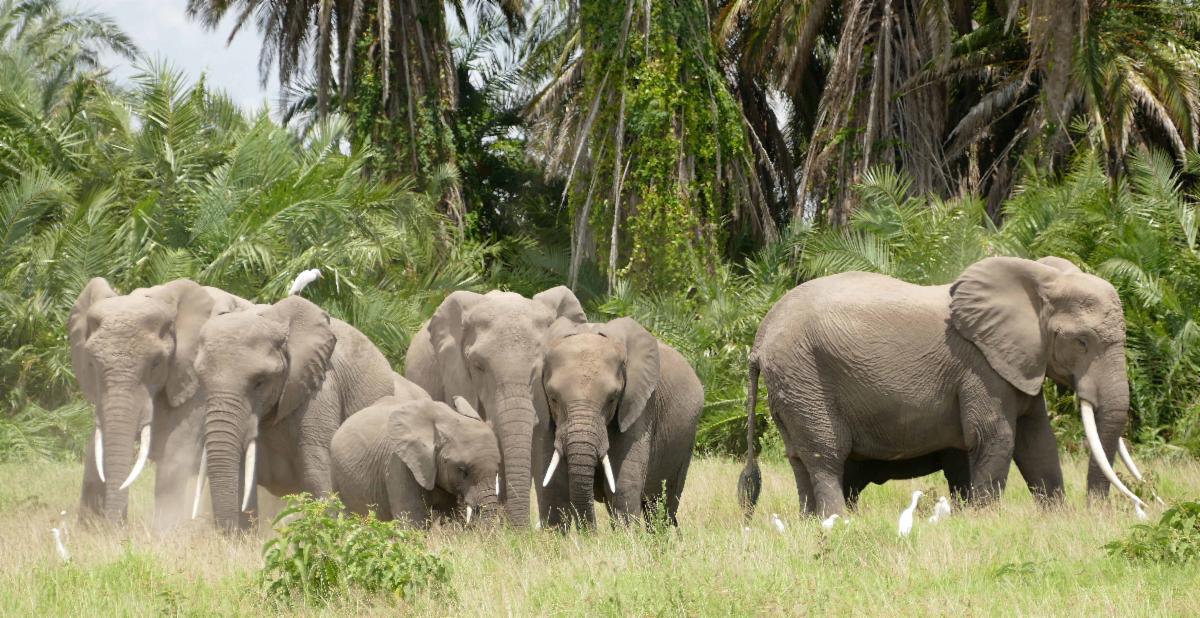
This is part of the big GB family with GarbaTulla on the right. You could follow this family by joining our Elatia program. We have chosen six Amboseli families for Elatia: the AAs, EBs, FBs, GBs, OAs, and PCs. You can choose one or all of the families to follow. Regular updates include photos and videos, and news of what is going on in the family.
To learn more about Elatia
go to
This Link.
If you have any problems or questions please
Name a Baby Elephant
There are presently many calves needing names and more coming up to naming time. One way to participate in the Amboseli elephant project is to name a calf.
Unlike our Elatia program where many people follow the same family, our naming program is a unique experience. The calf becomes "your" calf alone and the name you give forms a part of the Amboseli dataset for all time. For more information, please write to us at:
[email protected]
*********
Give a Gift that Lasts Forever
Designate the Amboseli Trust for Elephants as a beneficiary of your will, individual retirement account, or life insurance policy. To learn more about planned giving opportunities, please contact Betsy Swart:
Tel +1-508-783-8308.
|
|
|
News from the Amboseli Trust for Elephants
April - June 2020
|
|
This is a strange and difficult time for everyone. Who would have thought in January this year that we would be wearing masks and sheltering in place, that we would not be able to move about freely, and that Amboseli would be like a ghost park with not a single tourist.
I just spent 76 days straight days in Amboseli. In most ways it was blissful to have the Park almost free of cars and so quiet. At the same time, it was worrying to know that the Kenya Wildlife Service and the conservancies outside were not receiving any revenue. Although Kenya has an enlightened conservation policy, which does not insist that "wildlife must pay its way", we know it is impossible to maintain protected areas without funds. I hope the large conservation organizations and international bodies will step up to safeguard the rich and varied natural heritage of Africa.
Cynthia Moss
Director
Amboseli Trust for Elephants
|
|
 |
|
How Do Baby Booms Happen?
We're having a baby boom in Amboseli right now. So far in 2020, 138 new calves have been recorded, including one set of twins, and we are expecting even more. It seems that baby elephants are falling out of the sky. Every time Katito and Norah go out they find several new calves.
This year is not the first time Amboseli has had a baby boom. It has happened two other times. The first was in 1979-80; and the second occurred from the last two months of 2011 through 2012.
Elephants have a gestation period of 22 months and an inter-birth interval of about 4.5 years. This means that a female will give birth to a calf, and when that calf is about 2-3 years old, she will come into oestrus, mate, and give birth to a new calf when her previous calf is about 4-5 years old. Not surprisingly, all the adult female elephants are not on the same schedule and births are spread over the years.
|
|
 |
|
Angelina and her twins
|
 |
Some years have what we might consider an average number of births, other years there is a low number, and then there are the baby boom years. Several factors contribute to these differences, but the single most important one is environment. The ability of a female to conceive and carry a calf to term depends greatly on her own physical condition. During drought years females may stop all reproductive cycling and not resume until rainfall improves with resulting vegetation growth. With adequate food she can put on weight and build up her fat reserves, which are necessary for her to ovulate and conceive.
In Amboseli, during the drought of 1976, the females stopped cycling. Only two calves were born in 1977 and these were conceived in 1975. There were five calves born at the end of 1978, but these were conceived in early 1977 after the drought ended. Half of the calves who were born in 1976 died because of the drought. So by the beginning of 1977 almost all the females in the population were available to mate and start having calves again. And that is what they did: starting at the end of November in 1978 through to the end of 1980, 110 calves were born.
A similar thing happened in 2011-12. Amboseli experienced the worst drought in living memory in 2009. Close to 400 elephants died including many calves. Good rain finally fell in 2010 and the females began to recover and put on weight. Soon there was oestrous activity and mating and 22 months later an amazing baby boom started. Two females gave birth in October 2011 and then 47 more in November and December. Then in 2012 an unprecedented 201 calves were born.
|
|
|
It sometimes seems that every female has a new calf
|
We don't know if this year will prove to be a record, but it is certainly a serious baby boom year. We're only in June now and there are many large families we haven't seen yet because they are spending their time outside the Park, but when we do census them we expect to find at least another 30 new calves.
|
|
New Amboseli Book
We are pleased to report that Cynthia Moss and Sophie Walbeoffe's book
Impressions of Amboseli was recently printed and it is gorgeous. We are not sure yet how it will be distributed but copies have just arrived in Kenya. We will keep you posted on how to obtain a copy.
Veteran safari guide, mountain climber and explorer Iain Allen wrote a very nice review, which follows in part below:
In the introduction to her new book Sophie Walbeoffe describes the differences between photography and the painter's brush
"...perfection is not truth",
then goes on to say "I find it more exciting, and easier, to capture movement, depth of field, and colour by working from life rather than by only using a photograph to make a painting. By using expressive movement of the brush or pencil, it feels and learns the passage through distant mountains, glittering savannah, lingering clouds and sunshine on the backs of wild animals. You feel and see the animals, like no one else has. Your picture has a life of its own." She then goes on to prove her point in this small gem of a book, which brings the entire Amboseli ecosystem to life in a way that I've never seen before; and Cynthia Moss's writing complements Sophie's paint brush perfectly.
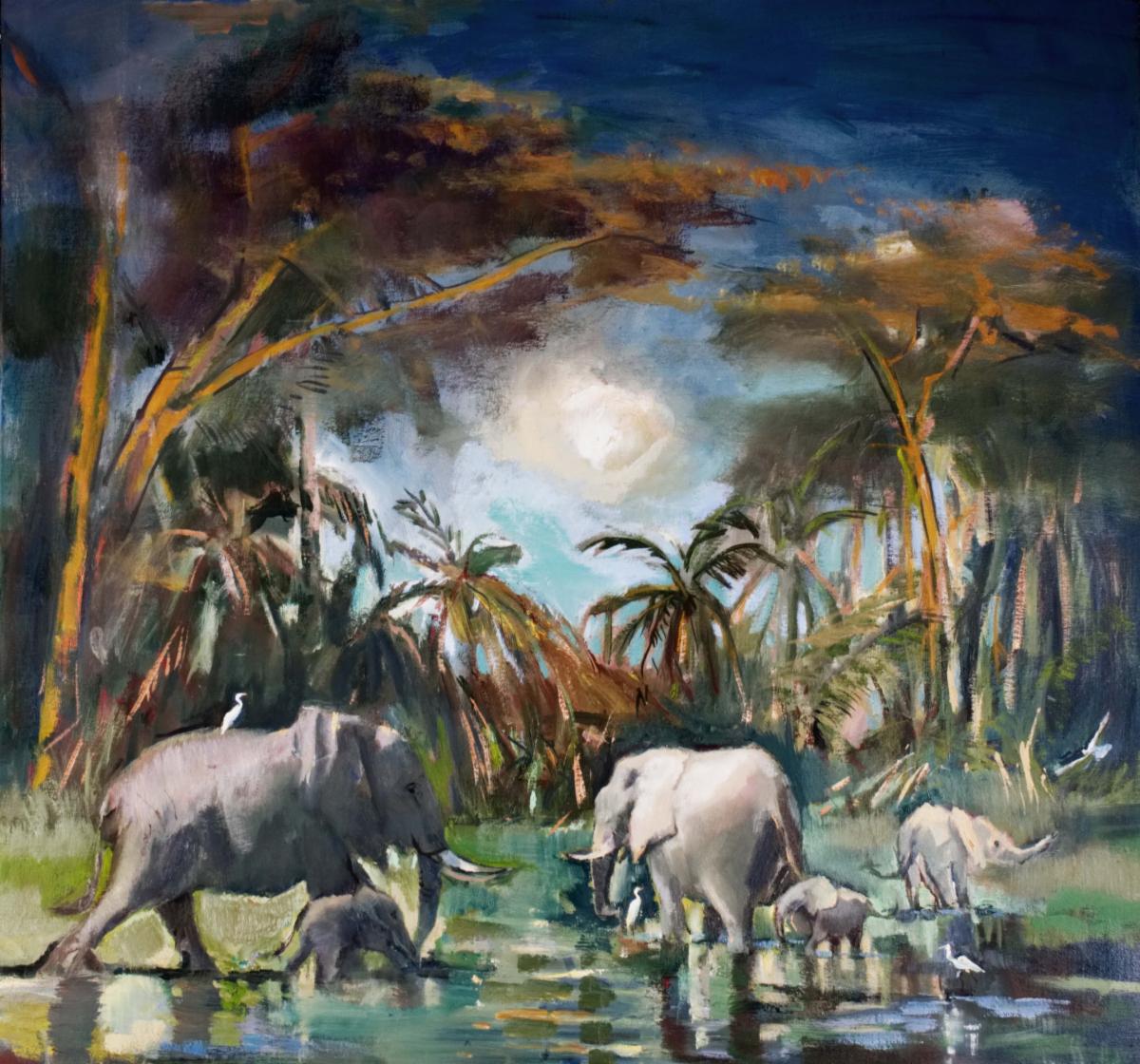
Amboseli is about sandy plains, crystal clear springs, stark trees, myriad wildlife, Kilimanjaro and most important of all, elephants. What better way to bring all of this together than through Sophie's stunning paintings, and the words of elephant expert Cynthia Moss?
Amboseli positively leaps from every page. If I had a favourite it would be the painting on the page before her diary extract, of a group of elephants in a spring, surrounded by palms and fever trees. An egret perches delicately on the back of the matriarch, and the play of light is sublime. But it is a hard choice, there isn't one weak painting in the book.
Cynthia Moss's writing comprises autobiography, Amboseli history, and the elephant story. She has condensed it perfectly into relatively few words, but she has missed nothing. To paraphrase Karen Blixen, Cynthia's writing is "Amboseli without any fat!" It is eminently readable. She has a way of describing elephants in a simple way that resonates in a far deeper and more meaningful way with the reader than if it was a detailed piece of work. I recently visited Cynthia's Amboseli research camp with a group of Americans. We sat around her as she described the social behaviour of elephants to us, and at some point she was asked what she thought was the most significant thing about an elephant. She smiled, and replied softly
"Elephants are kind...to each other."Nothing else needed to be said.
|
The History of the LA Family
I first got to know the LA family back in 1975. In those early years I was working out how many families there were in the population and who belonged with whom. As the adult females were photographed and the composition of the groups recorded, the groupings began to emerge as families. Each of these families was then assigned a letter of the alphabet. Thus, the first family photographed became the 'A' family, the next the 'B' family and so on.
I was working very much part-time in Amboseli and not living there, so it took quite some time to get to know all the families. The 'L' family was not recorded until March 23, 1975. That was the first time they were sighted and photographed. Luckily, they were a neat, small self-contained group consisting of seven members:
3 adult females
1 8-10-year-old female
1 4-5-year-old
1 2-3-year-old
1 12+-year-old male
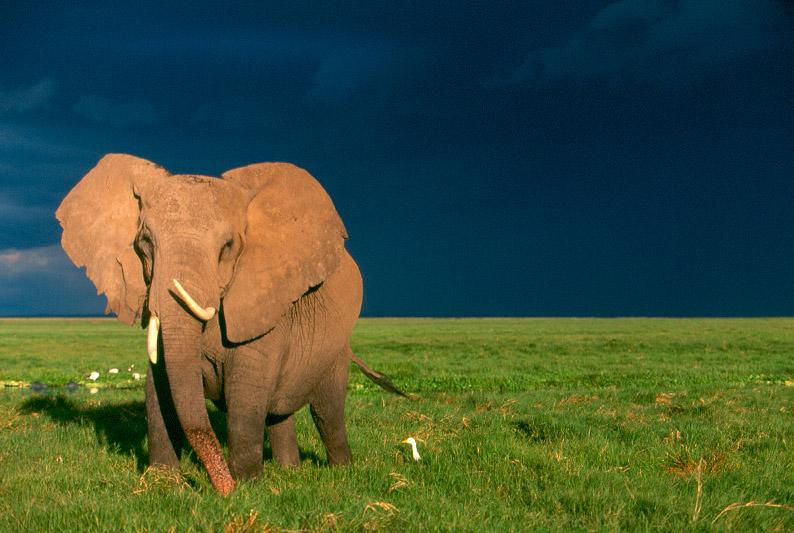
The largest adult female was very distinctive looking because her tusks were strikingly asymmetrical with her left tusk curving upward. I saw this female and her family over the next three days and got to know them
a bit better, well enough to assign them the le
tter 'L'.
|
|
I know there are many other things on your minds these days, but please don't forget ATE and the elephants. We still very much need your support.
|
|
|